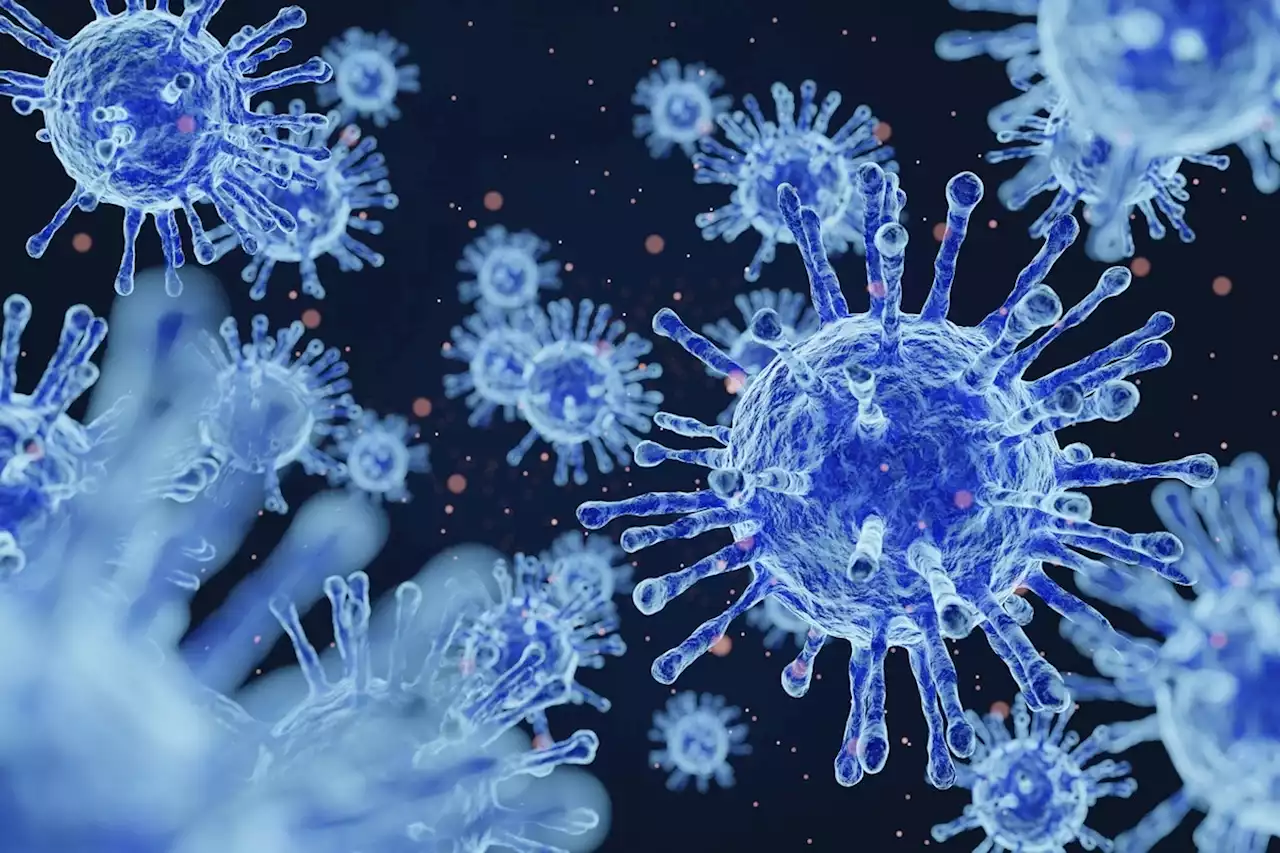Scientists report autoimmunity from molecular mimicry between SARS-CoV-2 spike and human proteins FIU SARSCoV2 COVID19 Coronavirus Spike SpikeProtein HumanProteins
By Dr. Priyom Bose, Ph.D.Jun 29 2022Reviewed by Aimee Molineux The emergence and rapid outbreak of a novel coronavirus, namely, severe acute respiratory syndrome coronavirus-2 in China in 2019, caused a global pandemic, which is popularly known as the coronavirus disease 2019 pandemic .
Background Previous studies have shown that SARS-CoV-2 induces a range of antibody responses and also increases levels of autoantibodies that interact with human proteins in severely infected patients. Although the differential levels of disease severity associated with COVID-19 are not well understood, researchers believe it might be related to molecular mimicry.
The key function of the spike protein of SARS-CoV-2 is penetrating host cells, thereby, causing infection. This protein protrudes from the virus and is a key antigenic protein for the virus. This is the reason why all COVID-19 vaccines and therapeutics have been designed based on the S protein of SARS-CoV-2.
A new study Related StoriesA new study published in Viruses has focused on studying molecular mimicry between the S protein of SARS-CoV-2 and known epitopes, using a computational method. In this study, researchers combined two previously studied methods, i.e., the establishment of molecular mimicry between S and human proteins via sequence similarity based on known epitopes using the Immune Epitope Database and using sequence and structural similarity in general.
Researchers reported that a TQLPP motif in the Spike and thrombopoietin protein shares similar antibody binding properties. The finding of the study related to the TQLPP motif indicated significant potential for cross-reactivity between Spike and hTPO due to molecular mimicry, and this may affect platelet production and cause thrombocytopenia. In silico studies also predicted cross-reactivity with other TQLPP-containing proteins , which requires in vivo validation.
Australia Latest News, Australia Headlines
Similar News:You can also read news stories similar to this one that we have collected from other news sources.
 Researchers explore disease severity post-infection with SARS-CoV-2 Omicron in hematologic patientsResearchers explore disease severity post-infection with SARS-CoV-2 Omicron in hematologic patients unidue SARSCoV2 COVID19 Coronavirus Omicron Variant HematologicPatients
Researchers explore disease severity post-infection with SARS-CoV-2 Omicron in hematologic patientsResearchers explore disease severity post-infection with SARS-CoV-2 Omicron in hematologic patients unidue SARSCoV2 COVID19 Coronavirus Omicron Variant HematologicPatients
Read more »
 A global lipid map reveals host dependency factors conserved across SARS-CoV-2 variants - Nature CommunicationsHere, Farley et al. perform untargeted lipidomics to assess how SARS-CoV-2 rewires host lipid metabolism. SARS-CoV-2 viral proteins specifically induce lipid droplet formation and dramatically change lipid metabolism to support infection; interfering with lipid metabolism using small molecule inhibitors decreases virus production.
A global lipid map reveals host dependency factors conserved across SARS-CoV-2 variants - Nature CommunicationsHere, Farley et al. perform untargeted lipidomics to assess how SARS-CoV-2 rewires host lipid metabolism. SARS-CoV-2 viral proteins specifically induce lipid droplet formation and dramatically change lipid metabolism to support infection; interfering with lipid metabolism using small molecule inhibitors decreases virus production.
Read more »
 Researchers analyze potential of niclosamide as a SARS-CoV-2 treatmentA recent study posted to the bioRxiv* preprint server assessed whether niclosamide could be employed in coronavirus disease 2019 (COVID-19) therapy.
Researchers analyze potential of niclosamide as a SARS-CoV-2 treatmentA recent study posted to the bioRxiv* preprint server assessed whether niclosamide could be employed in coronavirus disease 2019 (COVID-19) therapy.
Read more »
 Recombinant SARS-CoV-2 harboring double reporters for COVID-19 surveillanceIn a recent article posted to the bioRxiv* preprint server, researchers at Texas Biomedical Research Institute, Georgia State University, and the University of Alabama at Birmingham developed a bireporter-expressing recombinant severe acute respiratory syndrome coronavirus 2 (rSARS-CoV-2) for tracking SARS-CoV-2 infection.
Recombinant SARS-CoV-2 harboring double reporters for COVID-19 surveillanceIn a recent article posted to the bioRxiv* preprint server, researchers at Texas Biomedical Research Institute, Georgia State University, and the University of Alabama at Birmingham developed a bireporter-expressing recombinant severe acute respiratory syndrome coronavirus 2 (rSARS-CoV-2) for tracking SARS-CoV-2 infection.
Read more »
 Study finds Omicron variant could break through vaccine protection more effectively than the Delta variantStudy finds Omicron variant could break through vaccine protection more effectively than the Delta variant medrxivpreprint SUNY Omicron vaccine COVID19 coronavirus covid Delta
Study finds Omicron variant could break through vaccine protection more effectively than the Delta variantStudy finds Omicron variant could break through vaccine protection more effectively than the Delta variant medrxivpreprint SUNY Omicron vaccine COVID19 coronavirus covid Delta
Read more »
 Researchers explore disease severity post-infection with SARS-CoV-2 Omicron in hematologic patientsResearchers explore disease severity post-infection with SARS-CoV-2 Omicron in hematologic patients unidue SARSCoV2 COVID19 Coronavirus Omicron Variant HematologicPatients
Researchers explore disease severity post-infection with SARS-CoV-2 Omicron in hematologic patientsResearchers explore disease severity post-infection with SARS-CoV-2 Omicron in hematologic patients unidue SARSCoV2 COVID19 Coronavirus Omicron Variant HematologicPatients
Read more »
